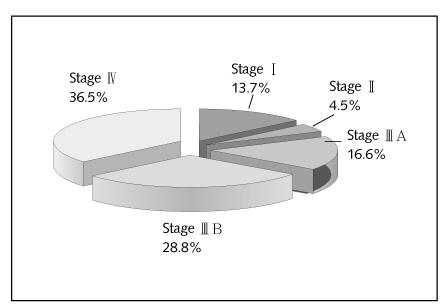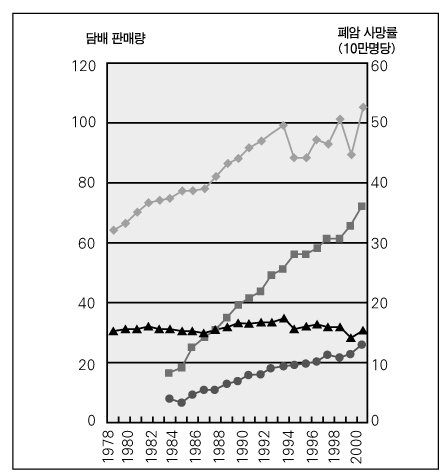 |
 |
- Search
| J Korean Med Assoc > Volume 46(1); 2003 > Article |
Abstract
Lung cancer became a leading cause of cancer deaths in Korea in 2000. It is an anticipated result of cigarette smoking which was very prevalent among Korean males over the past several decades. There were 10,230 new reported cases of lung cancer in 2000 and the lung cancer mortality rate was 25.0 per 100,000 persons in 2001. Despite better supportive care and improved surgical techniques and development of more effective chemotherapeutic agents, the outcome of lung cancer patients in Korea remains disappointingly poor with a 5-year relative survival rate of only 11.4%. One of the major reasons for this poor outcome is that only approximately one-fifth of lung cancer are diagnosed at early resectable stages and benefited from curative surgery while the majority of patients have their tumors found at more advanced stages. Unfortunately, there is no established means for early lung cancer detection and screening program. Smoking cessation is the one and only known effective means of lung cancer prevention. In order to curtail the ever-rising incidence and mortality of lung cancer in Korea, it is mandatory to launch an even more strong anti-smoking campaign and utilize all means to discourage teen-ager smoking. In addition, there should be more support from both industry and the government for the development of more effective chemotherapy and new molecular-targeted therapeutic agents and establishment of infrastructures for clinical trials. A new effective treatment for lung cancer can be established only through the scrutiny of well-designed clinical trials.
References
4. Bae JM, Won YJ, Jung KW, Suh KA, Yun YH, et al. Survival of Korean Cancer Patients Diagnosed in 1995. Cancer Research and Treatment 2002;34(5):319-325.
5. Lee CT. Epidemiology of Lung Cancer in Koreans. Cancer Research and Treatment 2002;34(1):8-12.
6. Jemal A, Thomas A, Murray T, Thun M. Cancer statistics, 2002. CA Cancer J Clin 2002;52:23-47.
- TOOLS
-
METRICS

-
- 0 Crossref
- Scopus
- 1,043 View
- 9 Download
-
Related articles in
J Korean Med Assoc -
Drug Interaction-An Overview1997 January;40(1)









